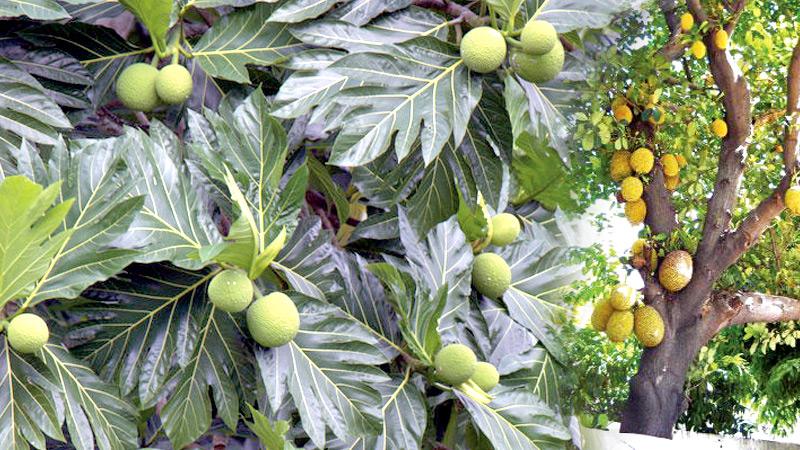
 The world faces crises of a different nature from time to time. The recent pandemic economically crippled nations at different degrees. Sri Lanka is facing a double whammy of the Covid-19 pandemic and the economic meltdown.
The world faces crises of a different nature from time to time. The recent pandemic economically crippled nations at different degrees. Sri Lanka is facing a double whammy of the Covid-19 pandemic and the economic meltdown.
Many essential food items such as powdered milk, rice, sugar, dhal and flour are scarce.
Restrictions have been imposed on importing many food items. The food production in the country is at a low ebb. Even though the production may be sufficient to fulfill the food requirement of the people, their reachability and affordability would be in question. Non-reachability of quality food during a crisis may affect those who can afford them too.
During an inevitable crisis, it is natural for people to compromise on their nutrient intake. Shortage of food and price escalations often lead to changes in people’s dietary patterns. People tend to opt for less expensive and low-quality food during difficult times. Dietary diversification becomes low and dependence on starchy staples becomes high. Foods that are rich in essential macro as well as micro nutrients such as animal-source foods, dairy, pulses, nuts, leafy greens, fruits and vegetables are not frequently consumed.
Hidden hunger
In many cases, people’s intake of sufficient food is guaranteed in terms of calories albeit, it cannot be assured that most of their macro and micro-nutrient requirements are met. Prolonged economic crises and food shortages can lead to ‘ micronutrient malnutrition’ which is also known as ‘hidden hunger’.
People who live below the poverty line bear the brunt of financial meltdowns. The increase in food prices can impact the quality and the quantity of food they consume which can directly affect their health.
Good nutrition is the key to a healthy and disease-free life. Good nutrition is vital for children of growing age for proper physical as well as cognitive growth and functioning. It also decreases risks during childbirth for the child and the mother. Balanced nutrient intake helps children learn better at school. As per the reports of World Health Organization (WHO), many millions of children in the world become wasted (low weight for height), stunted (low height for age), and underweight due to undernutrition.
Most crises in the world compel people to ‘eat to exist’. This may lead to deficiencies in vital and crucial micro-nutrients such as calcium and iron.
When the prices of animal-based food hike and the individual budgetary allocations are not sufficient to meet them, it is natural for people to opt for plant-sourced foods at a cheaper price. When the prices of protein-rich nuts, pulses, and seeds also jack up, people naturally tend to omit them. This behaviour may increase the risk of protein deficiency.
When people tend to adopt monotonous diets during crises, vitamin deficiencies are inevitable.
Prolonged absence of calcium and vitamin D which help absorb calcium in diet may result in poor bone health, dental issues and osteoporosis.
Iron deficiency cannot be regarded lightly as the consequences are dire. Iron deficiency is the major reason for anemia. As per nutritionists, iron deficiency is the most common nutrition-related problem in the world. Although iron deficiency is common to any gender at any age, it is most common in infants and women.
As per WHO reports, anemia is a serious global health problem that affects young children and pregnant women. Over 40 percent of children below the age of five and pregnant women are anemic. Anemia is also one of the main reasons for maternal mortality during childbirth and child mortality at birth in developing countries.
Alternative food
A balanced diet consists of vegetables and fruits of different colours, whole grains, plant as well as animal-based proteins such as fish, meat and dairy and healthy plant oils. When countries face financial meltdowns, it is natural for food prices to go up. This may lead to food insecurity. However, changing people’s ‘food behaviour’ is important to successfully face an economic crisis without compromising on health.
People opt for cheaper, refined, processed, and low-quality food when they face food shortages as well as price hikes. If people depend too much on store-bought food, it is natural and sometimes imperative to cut back on the food quantity and quality. When quantity and quality are decreased, it can detrimentally affect their health.
Hence, it is important to look for alternative wholesome foods which are grown in the wild as well in home gardens. Although people’s attention is not widely drawn for wild and freely available food, they can supplement the diet in a healthier manner. For example, jak and breadfruit trees are abundantly found in the country. There are hundreds of yam and tuber types grown in this fertile land. Most importantly, they are grown with least human intervention in cultivation .
Boiled jak fruit, breadfruit, yams, and tubers are good substitutes for Sri Lankans’ staple rice. At a time when the price of rice is increasing and the storage is decreasing, switching people’s eating patterns to wild staples can be wise.
Raising awareness
Raising awareness of edible plants with medicinal value that are grown on their own in home gardens, forests, and near and in water bodies is equally important. Nutrient-dense herbal edible plants are abound in Sri Lanka. Due to people’s ignorance of their edibility, many herbs are got rid of mistaking them to be weeds.
Such plants are not only used in ethnomedicine to cure diseases but can also be incorporated into meals to stay healthy. Such herbs also contain vital nutrients and are a solution to assure food and nutrient security. If awareness is raised of such edible plants, hikes in vegetable prices or their shortage may least affect the public.
Plants which are often mistaken as weeds such as Monara Kudumbiya, Kuppameniya, Wal Koththamalli, Gira Pala, Kekilla, Goda Beraliya (Diya Meneriya) can be consumed in the form of Melluma, Sambolaya and curry. Aquatic plants such as Diya Beraliya, Keran Koku and Miyana Dalu are also good substitutes to skyrocketing vegetable prices and can be procured with no money spent.
Raw fruits such as star fruit, guava, mango, Ambarella, governor’s plum, egg fruit, sour sap and fig can be used in making delicious curries. That will also add a flavour and diversity of nutrients to the monotonous vegetable curries consumed regularly.
Since sufficient warnings have been issued by various scholars on a forthcoming food shortage in the country as a result of the crippled food production due to the Covid-19 pandemic and the prevailing economic crisis, the public should take serious note of it. Rather than depending on store-bought food, one’s own production of foods is a solution. It is wise to revert to home gardening once again.
Collective home gardening
Apart from engaging in home gardening to fulfill household food and nutrient requirements, collective home gardening practice can increase the production as well as the diversity of crops. That will also contribute to a high diversity of foods. Five to ten households, preferably, neighbours in an area can get together and decide on the type of food plants to be grown. Each household can grow up to five crops (different crops for different households) as per the space and resources available. When the time to harvest the yield comes in about six months, the harvest is shared among the number of families in the ‘self-sufficient food unit’.
Thus, each family will get about 25 to 50 crops at a time depending on the number of crops a household has grown. Since there is a high diversity of foods in such a self-sufficient food production unit, there will not be concerns about malnutrition. The food security is also well-assured.
Home gardening involves small-scale food production which is carried out without the use of chemicals and toxins. Hence, the yield is not polluted with health-damaging toxins. This is also an earth-friendly endeavour.
Dr. Naveen De Soysa is the Assistant Secretary of the Government Medical Officers’ Association and the Registrar in Community Medicine at the National Institute of Health Sciences. Panchamee Hewavissenti is a culinary researcher and recipe creator
